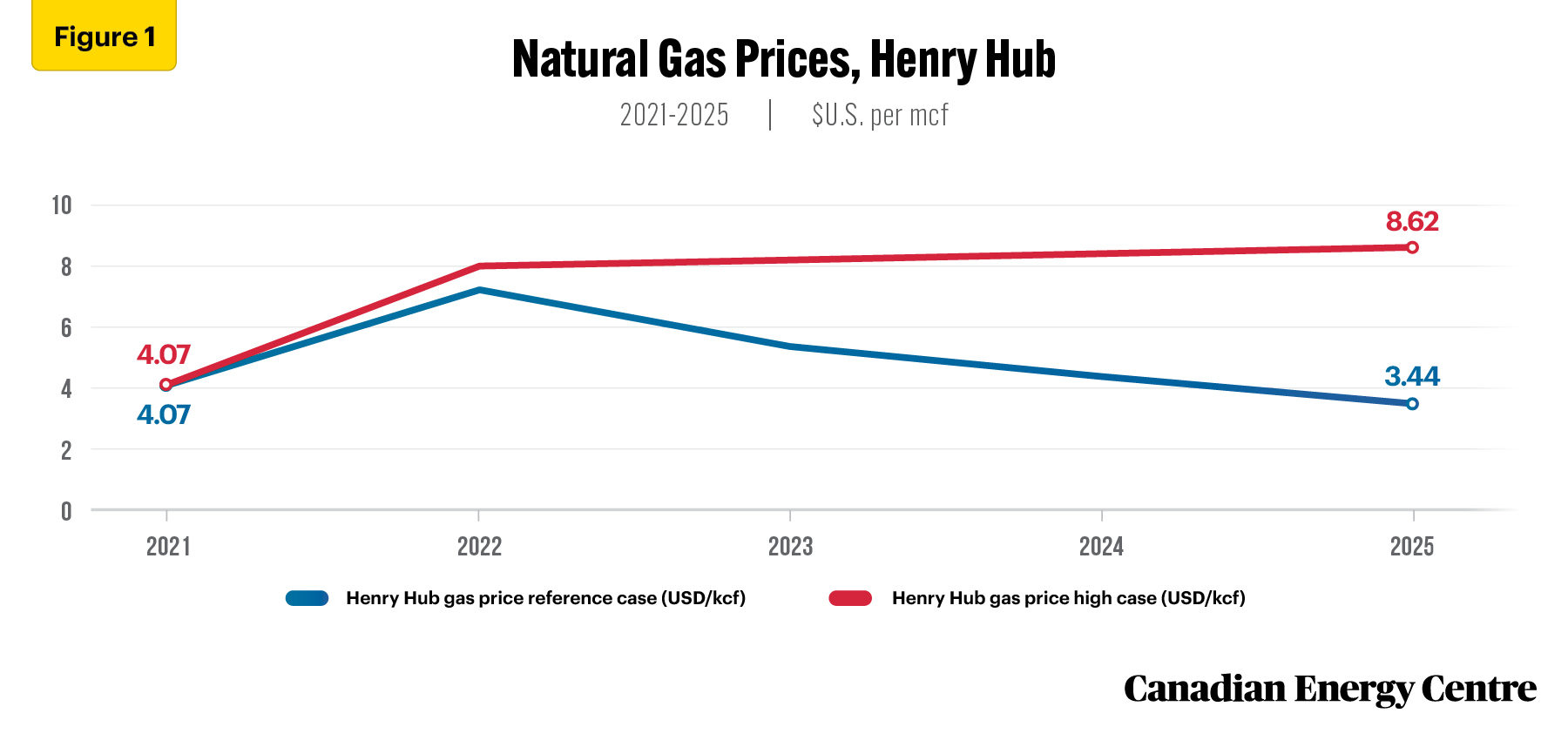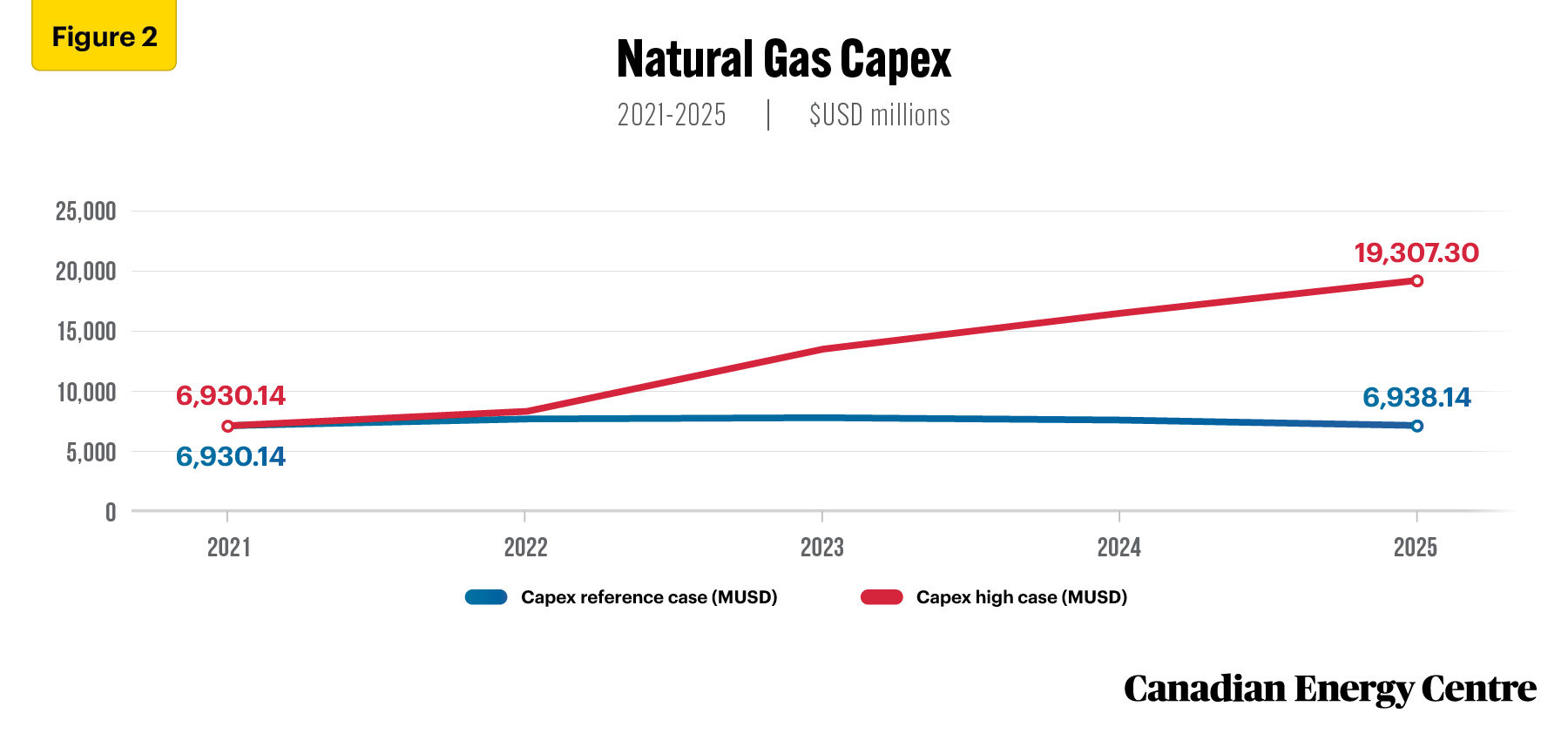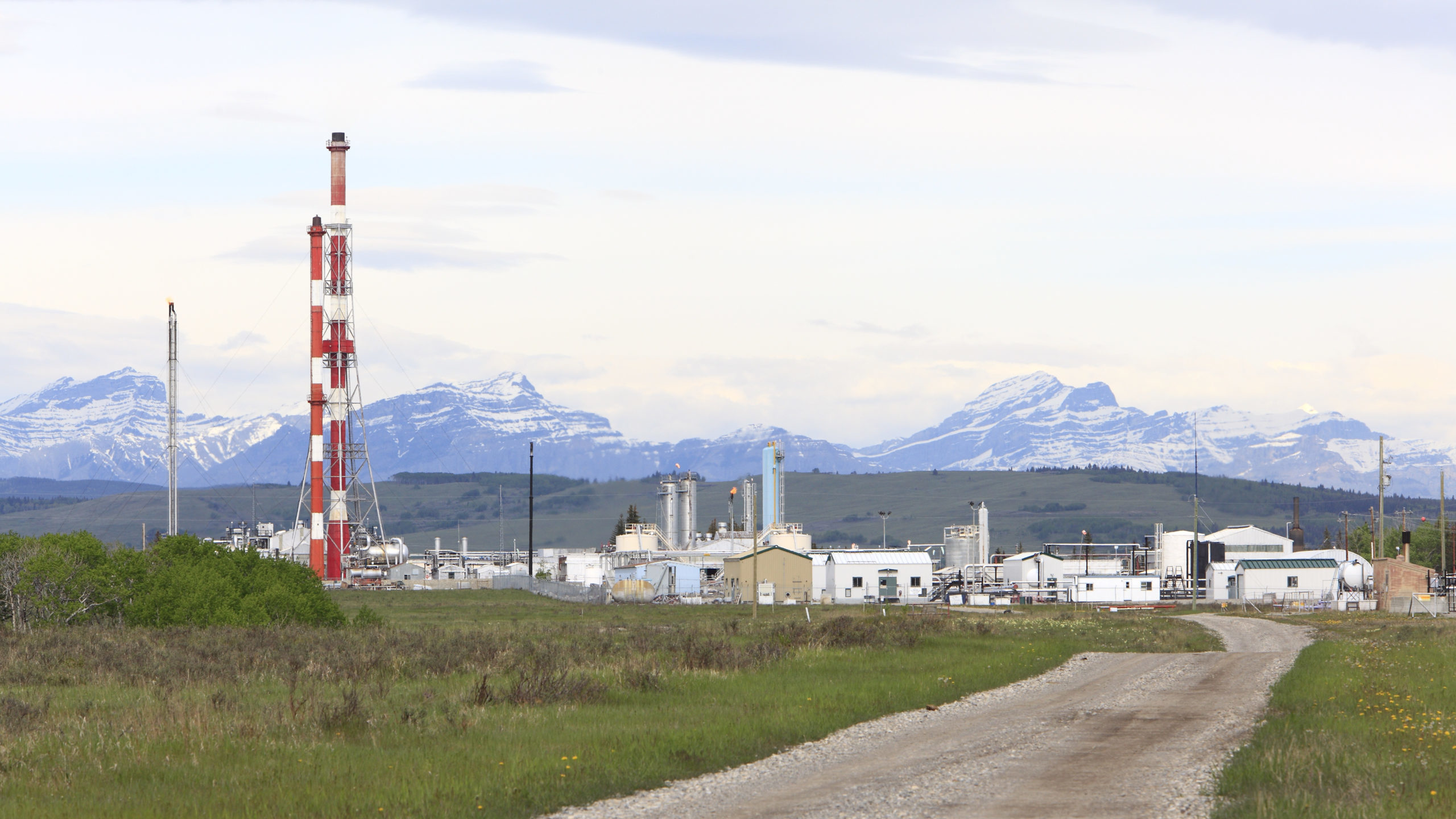To sign up to receive the latest Canadian Energy Centre research to your inbox email: research@canadianenergycentre.ca
Download the PDF here
Download the charts here
Overview
With energy security becoming a major issue globally, the importance of the Canadian natural gas sector as a secure and reliable supplier of energy cannot be overstated.
The prospects for higher gas prices over the next few years could see Canadian natural gas sector performance metrics experience a profound turnaround from previous years. Improvements under higher natural gas have benefits for producers, federal and provincial governments, and all Canadians.
In this Fact Sheet, using the Rystad Energy UCube, we examine Canadian natural gas sector key performance metrics (capex and government take) under a reference natural gas price scenario and a high natural gas price scenario, over the next half decade.
The written content in this report has been prepared by the Canadian Energy Centre (CEC) and does not represent the views of Rystad Energy.
Background on Rystad Energy UCube and energy price assumptions
Rystad Energy is an independent energy research company providing data, analytics and consultancy services to clients around the globe.
UCube is Rystad Energy’s global upstream database, including production and economics (costs, revenues, and valuations) for more than 80,000 assets, covering the portfolios of more than 3,500 companies.
The UCube data set is used to study all parts of the global exploration and production (E&P) activity value chain, including operational costs, investment (capex and opex), fiscal terms, and net cash flows for projects and companies, both globally and by country.
Under the UCube reference gas price case, Henry Hub prices are estimated to average $4.89 U.S per thousand cubic feet (mcf) between 2021 and 2025 (see Figure 1).
Under the UCube high gas price case, Henry Hub prices are estimated to average $7.46 U.S per mcf between 2021 and 2025 (see Figure 1).

Source: Derived from the Rystad Energy UCube
Natural gas capital expenditures (capex)
Under the gas price base case, natural gas capex rises from U.S.$6.9 billion in 2021 to U.S.$7.9 billion in 2023, before falling back to U.S. $6.9 billion in 2025. Under the gas price high case, natural gas capex rises from US$6.9 billion in 2021 to U.S.$19.3 billion in 2025, an increase of about 180 per cent (see Figure 2).
By 2025, annual natural gas capex is U.S.$12.4 billion or nearly 2.8 times greater under high gas prices than under the gas price reference case (see Figure 2).

Source: Derived from the Rystad Energy UCube
Natural gas government take
Under the gas price base case, natural gas government take, including royalties and corporate income taxes, increases from nearly U.S.$2.6 billion in 2021 to U.S.$7.1 billion in 2022, before falling back to U.S.$2.0 billion in 2025. Under the gas price high case, natural gas government take rises from nearly U.S.$2.6 billion in 2021 to over U.S.$21.1 billion in 2025, an increase of over 711 per cent (see Figure 3).
By 2025, annual natural gas government take is about U.S.$19.1 billion or over 10 times greater under high gas prices than under the gas price base case (see Figure 3).

Source: Derived from the Rystad Energy UCube
Conclusion
A higher gas price environment over the next half-decade could have a significant impact on Canadian natural gas sector key performance metrics.
Improvements to natural gas industry metrics under higher gas prices have benefits for producers, federal and provincial governments, and all Canadians.
As a lower emitting fuel, natural gas plays a critical role in meet rising global energy demand and reducing global emissions during the transition.
Notes
This CEC Fact Sheet was compiled by Lennie Kaplan at the Canadian Energy Centre (www.canadianenergycentre.ca). The author and the Canadian Energy Centre would like to thank and acknowledge the assistance of two anonymous reviewers in reviewing the data and research for this Fact Sheet. Image credits: Alberta Energy Regulator
The written content in this report was prepared by the Canadian Energy Centre (CEC) and does not represent the views of Rystad Energy.
References (all links live as of July 6,2022)
Rystad Energy UCube. 2022. <https://bit.ly/3veaMIV>.
Creative Commons Copyright
Research and data from the Canadian Energy Centre (CEC) is available for public usage under creative commons copyright terms with attribution to the CEC. Attribution and specific restrictions on usage including non-commercial use only and no changes to material should follow guidelines enunciated by Creative Commons here: Attribution-NonCommercial-NoDerivs CC BY-NC-ND.
